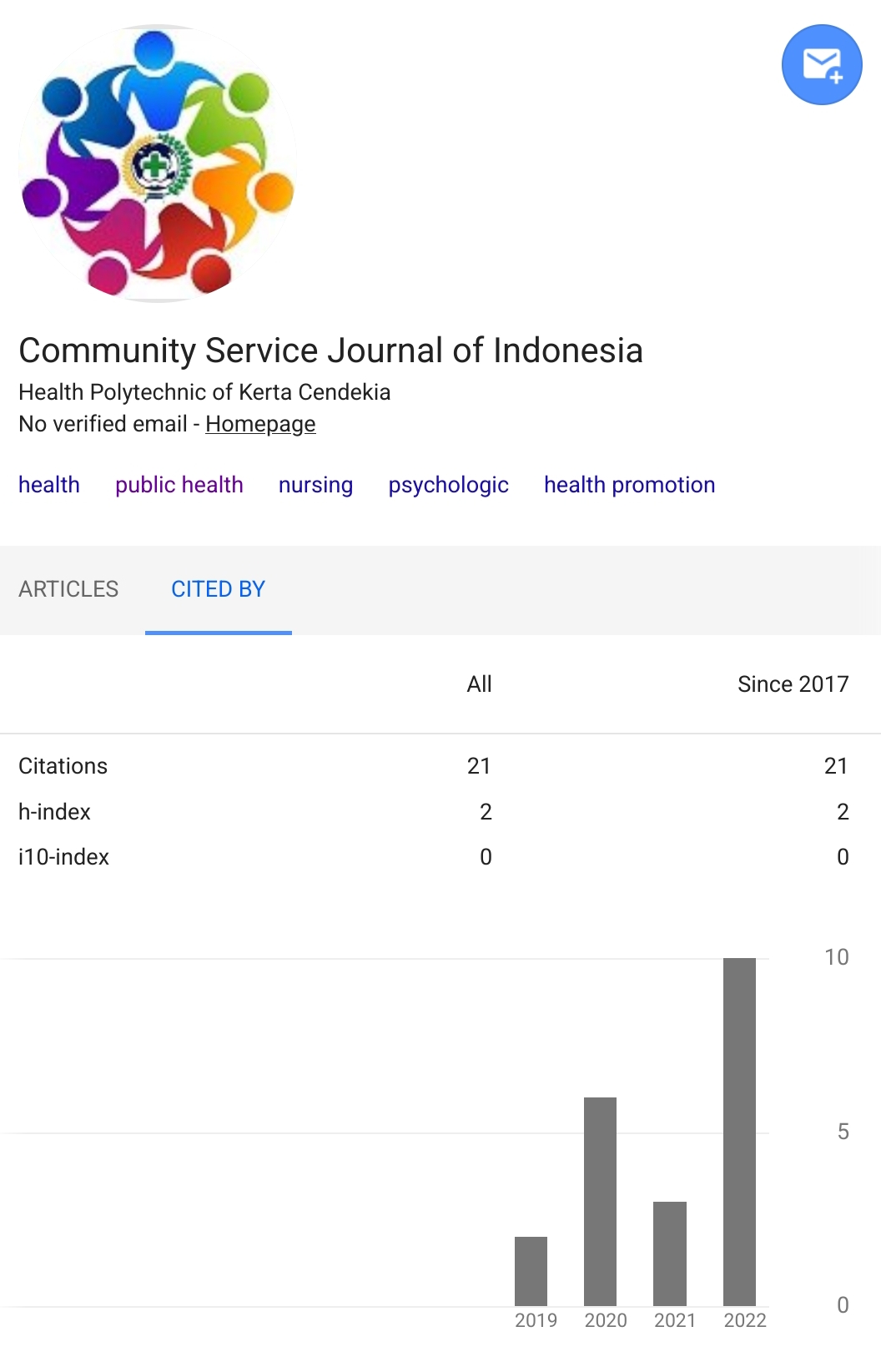INTRODUCING THE EFFECTS OF SMOKING ON THE HEART AND BLOOD VESSELS TO REDUCE SMOKING BEHAVIOR AMONG STUDENTS
Abstract
Smoking causes various diseases in our bodies, such as heart disease and blood vessel disorders, lung cancer, oral cavity cancer, laryngeal cancer, high blood pressure, impotence as well as pregnancy disorders and fetal defects. The dangers of smoking are not only aimed at smokers (active smokers) but also for non-smokers who inhale cigarette smoke around smokers (passive smokers) and in fact the effects received from passive smokers will be much more dangerous than active smokers. Because of the many negative impacts that arise for teenage smokers, it is necessary to provide knowledge and understanding to teenagers, especially Islamic boarding school children, regarding the dangers posed by smoking. The goal is to increase understanding by providing education to Students regarding the effects of smoking on the heart and blood vessels as an effort to reduce smoking behavior among students in PP. Al Hikam Bangkalan. The methods used in counseling are lectures and questions answer. Before counseling, participants were given a pre-test, then after counseling, participants were given a post-test. The results of the pre-test and post-test are assessed and then data processing and evaluation are carried out. Pre-test results and post-test regarding knowledge of the effects of smoking on the heart and blood vessels through a questionnaire, there was a direct increase in scores by students who took part in this activity. The percentage increase in average value was 9.7%. This significant increase in the average value indicates a change in the level of knowledge of the participants after attending the counseling session. Introducing the effects of smoking on the heart and blood vessels as an effort to reduce smoking behavior among students in PP. Al Hikam Bangkalan has increased knowledge and understanding of the dangers of smoking.References
Khoirunnisa, A., Nugraha, P., Cahyo Section, K., Health, P., Behavior, I., & Society, K. (2019). Several Factors That Influence the Smoking Practices of Santri at the Darut Taqwa Islamic Boarding School, Semarang City (Vol. 7, Issue 1). http://ejournal3.undip.ac.id/index.php/jkm
Mackay J, Mensah A George. The Atlas of Heart Diseases and Stroke. CDC WHO, 2004.
Öberg, M. et al. (2010). Articles Worldwide Burden of Disease from Exposure to Second-Hand Smoke: A Retrospective Analysis of Data from 192 Countries. The Lancet. 6736(10) : 1–7.
Prabandari YS, Ng Nawi, Padmawati RS. Smoke-free areas as an alternative for tobacco control. Study of the effectiveness of implementing a smoke-free campus policy on student smoking behavior and status at the UGM medical faculty, Yogyakarta. Health service management. 2009;12:218-25
Rizkiani M, Widyastuti RH. The relationship between stress and smoking behavior in male civil servants. Diponegoro University Health Journal. 2012.
Umar F, Citrakesumasari, Jafar N. Smoking behavior and residential environment of coronary heart disease outpatients in Makassar. Indonesian Community Nutrition Media. 2011;1(1):21-8
Copyright (c) 2024 Abraham Ahmad Ali Firdaus , Mochamad Faishal Riza , Sa'bania Hari Raharjeng, Sulistyorini, Yuriske Agnovianto

This work is licensed under a Creative Commons Attribution-NonCommercial 4.0 International License.
Authors who publish with Community Service Journal of Indonesia agree to the following terms:
- Authors retain copyright licensed under a Creative Commons Attribution-NonCommercial 4.0 (CC BY-NC 4.0), which allows others to remix, tweak, and build upon the authors' work non-commercially, and although the others' new works must also acknowledge the authors and be non-commercial, they don't have to license their derivative works on the same terms.
- Authors are permitted and encouraged to post their work online (e.g., in institutional repositories or on their website) prior to and during the submission process, as it can lead to productive exchanges, as well as earlier and greater citation of published work (See The Effect of Open Access). Authors can archive pre-print and post-print or publisher's version/PDF.













